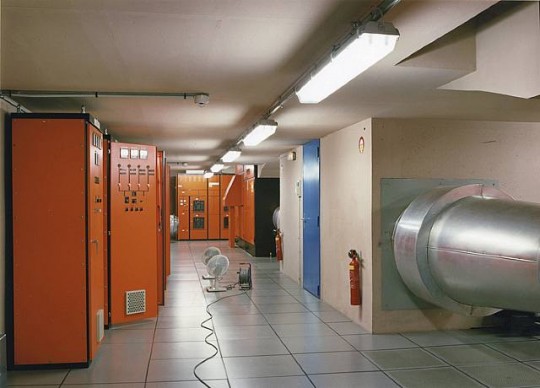
The exhibit “New Topographics: Photographs of a Man-Altered Landscape” was a show of photographs by Lewis Baltz, Stephen Shore, John Schott, Henry Wessell, Jr., and others, curated by William Jenkins at the International Museum of Photography at the George Eastman House (Rochester, New York) in January 1975.
Jenkins also invited Bernd and Hilla Becher, then teaching at the Kunstakademie Düsseldorf (Germany). The German couple had been photographing abandoned structures, mostly industrial, since the 1950s.
The show had an enormous affect, though not right away as the initial response was of critical negativity. The lingering importance of this show, and of, in particular, Baltz and Shore I think, but Joe Deal as well, and the Bechers, was in an almost prophetic capturing of an exhausted culture.
Jenkins wrote in the catalogue that; “The pictures were stripped of any artistic frills and reduced to an essentially topographic state, conveying substantial amounts of visual information but eschewing entirely the aspects of beauty, emotion and opinion…”.
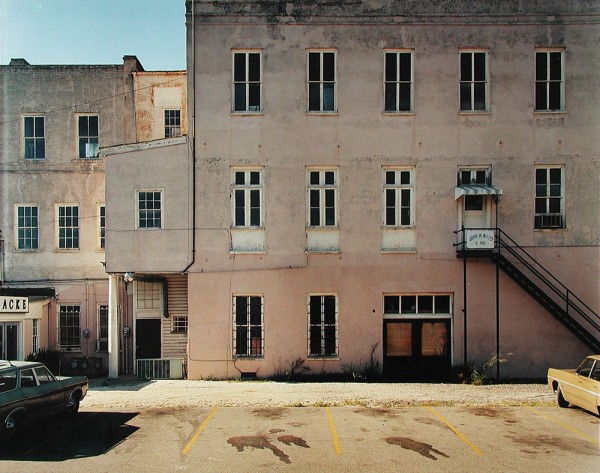
Stephen Shore
This isn’t quite right, or rather, it’s only a minor aspect of what is going on in these photos. There are few, if any, people in Baltz work, and the best of Shore, I think, are the photos without any, or very little, life in them. What seems much more important is the sense of a societal imprint on the land, of the indifferent marks of business and industry, and of the abject sadness expressed in the pointlessness and failure of the enterprises which created the marks.
When LACMA re-staged the exhibit in 2010, the Christy Lange noted “Looking at the work, what comes to the fore is the predominant spirit of the solitary road trip as a working model. The photographs evoke Evans’ American Photographs (1938) and Frank’s The Americans (1958) as much as Jack Kerouac’s On the Road (1957) and the Dennis Hopper-directed Easy Rider (1969). Many of the series were products of cross-country journeys, and all showed the conflict between the frontier spirit of traversing the majestic countryside and the stark reality of the pale, dank sprawl of motels, shops and houses that they encountered.”

Henry Wessell, Jr.
This work influenced and helped coalesce the Conceptual Art movement, and I suspect its influence goes much further than that. The west looms large in most of these photos, and the observation about road trips is, I think, pretty perceptive. For this was the de-romanticizing of expansion, and a redefining of the American Dream. Looking back, the paradox is that while de-romanticizing, the work was predicated on a deeply romantic vision of what ‘isn’t’ there. A vision of a culture of idealism, but an idealism mediated by the lies of capital. This is a landscape of detritus, of forgotten projects and dreams, and I often feel I am stepping into a hard boiled crime novel. There is a cynicism, a genuine cynicism of the kind only the deeply disappointed can feel.
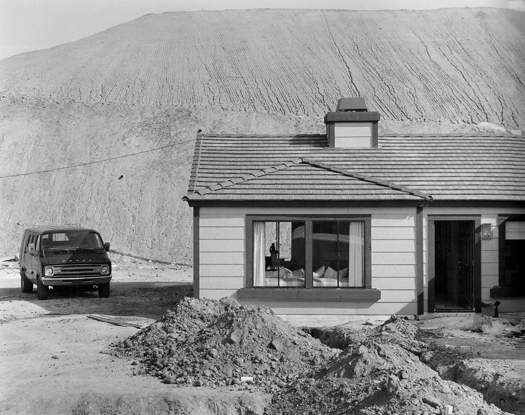
Joe Deal
There are endless uncanny effects. Uncanny in the sense of knowing the viewer has just missed, or recently missed anyway, a moment of activity, of small entrepreneurial undertakings that, inevitably have failed. For failure is the lingua franca of the dispossessed ; for this is, in one form or another, the working class that dreams itself as a middle class. There is a sense of shell shock in the faces you don’t see. The people you know live in the cheap hotel rooms, and pre-fab housing, or that walk across the empty parking lots in search of….something.
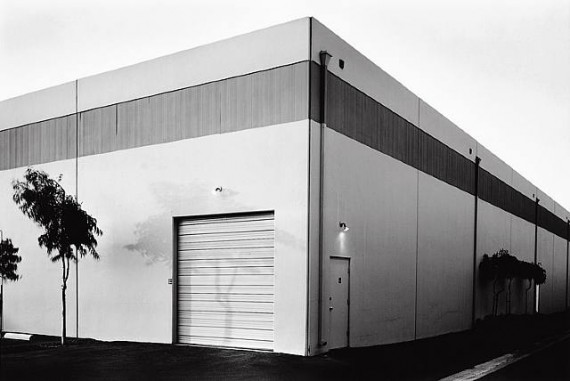
Lewis Baltz
This is the front edges of questions that erupted into class analysis in books like Mike Davis “City of Quartz” 1990, but was also a last look backward at a landscape that still retained at least traces of dreaming. Some of these photos seem nostalgic in places, but never sentimental. The nostalgia is a muted forlorn melancholy for the land has been scarred and treated much as the people we hardly see in these photos have been treated. There is a sense of these photos as slides for scientific study — or of police evidence or exhibits for a trial nobody has been informed about.
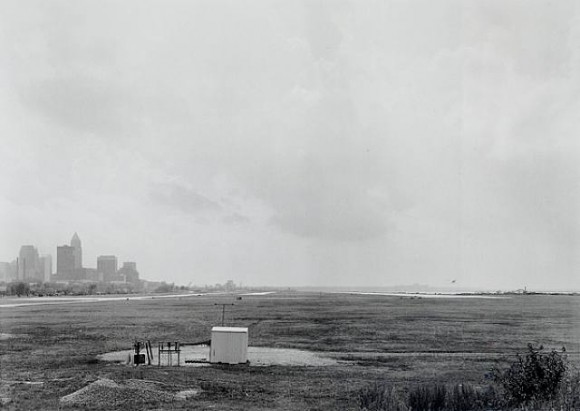
Frank Gohlke

Frank Gohlke
There is a reminder here, too, of photographs of Soviet era Russian resorts, now crumbling and deserted. Recent photo essays on former Soviet satellite countries in the Caspian Sea area reveal a similar sense of space, of irrationally or totally unplanned land use, of human activity reduced to the small concerns of daily survival. The American west and Kazakhstan share a similar scale of open space vis a vis the human.
This is the new global reality — extreme polarized economies, and a mass illogic in land use, and of wholesale waste on an existential level.

There is an affinity with genre, too. These photos from the 1970s were a precursor to a later dystopian landscape found in sci fi from J.G. Ballard, or John Brunner. In turn the Black Mask writers were looking ahead in those grim crime stories of the 40s and 50s to just this reality and the New Topographic artists were chronicling a transitional moment between a buried post war malaise that had moved onto the Viet Nam era’s collective sense of despair (and lack of potency in the American male), and then to the post modern obliteration of inwardness —replacing it with a fetishizing of the surface, a denial of class antagonisms and difference.
There are other related narratives at work here, too. Tim Wise recently wrote, in an interview…
“G: We’ve seen, especially in the last two elections, white people go against their own self interests, who are so hysterical that there is a Black man in the White House, particularly poor and working class white people who have actually sided with those class interests, opposing tax cuts for the rich, opposing health care for themselves, and ultimately believing that one day they too might be rich.
TW: Part of that is an old tradition, particularly among white struggling people, that’s been going on for 400 years going back to the colonies; an attempt to convince them that their real interests were with other whites even if they were rich whites, rather than with their Black and Brown brothers and sisters. And it’s worked with every generation to different degrees.
What was interesting during the Depression, one of the reasons there were such high levels of support for social safety net programs was precisely because people of color were basically excluded from them. So whether it was the New Deal programs, the jobs program, the FHA Loan program or later on, the GI Bill program from which people of color were routinely blocked – as long as you thought the only beneficiaries of big government looked like you it was all good.
But as people of color gained access through social movements, protests, and the civil rights struggle to some of those things that white people always had had, then the backlash happened and all of that confusing one’s interests and thinking of one’s interests in racial terms rather than economic terms became possible again.”

Andreas Gursky
The story of race in the U.S. remains mystified.
Wise adds…
“What was interesting during the Depression, one of the reasons there were such high levels of support for social safety net programs was precisely because people of color were basically excluded from them. So whether it was the New Deal programs, the jobs program, the FHA Loan program or later on, the GI Bill program from which people of color were routinely blocked – as long as you thought the only beneficiaries of big government looked like you it was all good.”
The working class in the U.S. has always wanted to see itself as middle class. I remember a student I had once, when I was teaching English in Poland, and he was a young Pole…I was explaining that men like Dick Cheney were very wealthy, far wealthier than he might imagine. And that Cheney had made his money off war and death. The response was to wish he one day could be as rich as Dick Cheney, as smart and cunning.
This is global. The selling of this fantasy goes on 24 hours a day, 7 days a week.
The artwork must be prophetic, though not in the adolescent sense of fortune tellers and magic. It must speak an oracular vocabulary. The Oracle speaks ‘before’ someone, and speaks in riddles.
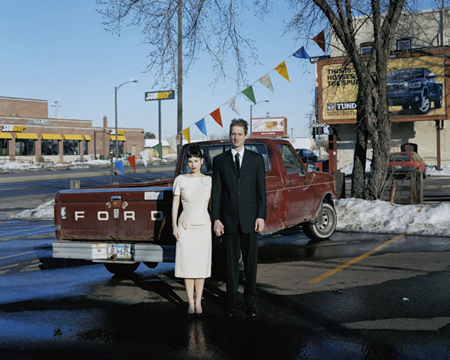
Alec Soth
Walter Benjamin stressed the significance of allegory. For that which has meaning, in artworks, in narrative, outside of the subjects or characters. For him this was in opposition (in a sense) to symbol, which he saw as complete and fully realized and unified.
“Allegories are, in the realm of thoughts, what ruins are in the realm of things”
Walter Benjamin
Ruins, as allegorical, contradict the narrative of the status quo. They splinter the meaning, and ask if historical traces will reclaim a meaning lost in mass production.
“The work makes public something other than itself; it manifests something other; it is an allegory. ”
Martin Heidegger
The foreshadowing of the current crisis of the West is written in the US most vividly in Hopper and film noir, in writers like David Goodis and Jim Thompson, and then with the New Topographics exhibit, a sort of fulcrum was found that sent the many arteries of meaning spinning outward. That sense of defeat and loneliness, the mystery of people who seem to be hiding, of workers not working, on a kind of permanent lay off, was suggestive of later artists….photographers like Alec Soth and Andreas Gursky, and in a handful of prose writers, Richard Ford perhaps, and guys like Daniel Woodrell and Mathew F. Stone…but the vision had been eclipsed by a growing hegemonic state that was mediating all of daily life — and the producers of mass culture, the giant media corporations were sucking life out of a populace more and more terrified by their own alienation. European filmmakers were re-inventing this narrative, commenting on it, and in other mediums work began to spring up, the short novel Pedro Paramo by Juan Rulfo, in 1955, retains a place of significance and influence still. It was the voice from south, a Mexican voice, a Mexican dream. For artworks must engage with a material world that is now dessicated and stunted, suffocating beneath the endless institutional assaults on the poor. The working class has stopped dreaming it is middle class. It has stopped dreaming. Rulfo dreamed for them, even if it was a dream of death.
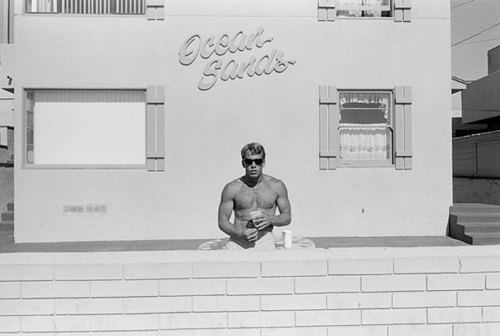
Henry Wessel, Jr.
The photo at the top of this blog entry is one by Lewis Baltz, of the interior of a Meteriological Center. I love this photo. In some way I cannot define, quite, it expresses an absence, a deported population, of missing technicians, and while clean and technologically advanced, it is also banal and ordinary, and the utopian dream of technological conquest is betrayed by this banality.
The allegorical creeps into corporate junk often, as well. The sense captured by Baltz in that photo is one I remember from late 50s and early 60’s television. This was that age that The Master expressed so perfectly. The sterility of metal filing cabinets and the almost militaristic denial of decor. This is an Ayn Rand aesthetic in a sense, a NASA Brooks Brothers white man world. It was a schizoid amid visual non sequitors, a repressed sexuality in denial of race, and ever more hysterical in its closeting of the male icons of the era.
It is worth noting Larry Sultan and Mike Mandel’s books “Evidence” (1977), a collection of found and recontextualized images taken from the files of both private corporations and public institutions and agencies (Bechtel, The Jet Propulsion Lab, GE, and The San Jose Police Department…etc.). The work was presented without captions. There is this same sense of futurism, space dreams, techo-fetishizing, and of the repressed white man clinging to something that was being pronounced dead right that moment. Coming out only two years after The New Topographics exhibition, it reinforces that sense of an almost Kafka-like prosecution of Manifest Destiny, Puritanism, and capital.
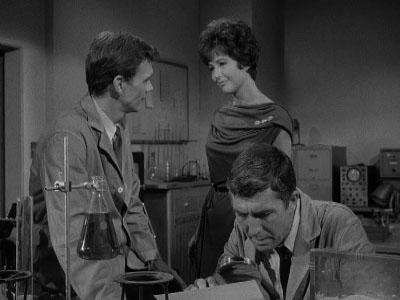
The Outer Limits, 1963
This was the WHITE American narrative. This was the last gasp of White Male authority that carried any weight. That it was already dead is obvious only in retrospect.
The New Topographics however, also created an awareness of an uncanny space amid the vernacular architecture of the West — the sheet rock and aluminum of marginal industrial parks, the aerospace industry, and sheet metal manufacturing, the growing military sub-contracting and computer related businesses, as well as fast food outlets and gas stations. What was shared was a sense of modern space, the juxtaposition of crowded and deteriorating urban areas and the open emptiness of the rural west…but a west quickly falling into its own form of disrepair, its own stunted lack of imagination and planning.
The era of the original new topographic photographers marked the start of a more calculated social imprisonment of the working and underclass. The conscious segregating (in the West and especially south-west) of Latino and Asian immigrant labor, from the comfortable lives of white liberal America. The architecture reflected this, as an innate dimension of its planning. The new world order was of vast worker migrations, of unlimited guest workers, often in their own country. The new financialized economy of neo-Imperialism found expression is ever more segregated housing and development.
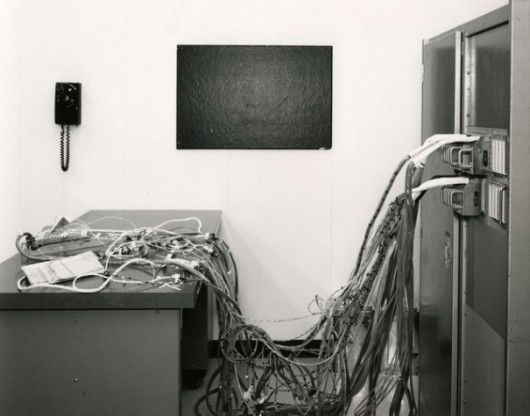
Larry Sultan, Mike Mandel
Outside Tijuana, Mexico, one sees the new neighborhoods for the children of cartel leaders, American educated business school grads, or even hipster white couples looking to buy a dream house cheap. Tijuana however, is a microcosm for a blighted future as it is a social petri dish for NAFTA after shocks –and this is etched into spaces of the city. Back in 1961 PRONAF (Programa Nacional Frontiero) and the Border Industrialization Program were started to lure industrial and some commercial business to the border. Then came the Maquiladoras in the later 60s, followed each decade by more and more. SANYO, Fairchild Industries, Ford, and GE — this was the development zone so favored by Clintonites and applied in exactly the same way in Haiti and now Honduras. In Tijuana, it happens to be televisions that are built. The novelist Kem Nunn, a favorite of mine, in his novel Tijuana Flats, lays out a landscape of industrial pollution, despair and narcotic driven micro economies.
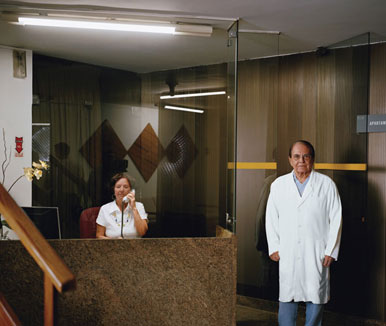
Larry Sultan
Nunn is another heir to the new topographics, as well, of course, to hard boiled fiction, Hemingway, and Cain. His is the end-game landscape of Capital. The open road suggested in 1974 by the curators (though I doubt the photographers themselves) was already being shut down. Route 66, established in the 1920s, linked Chicago with the southwest and eventually Los Angeles. It was officially decommisioned and the last section replaced by the Interstate system in 1985, outside Williams, Arizona — but it had accrued a fair amount of kitsch mythology by then, including a TV series and song. The world of Route 66, in its at least perceived heyday in the 50s and early 60s still retained local economies and community cultures of a sort. Today, the homogenization is complete, the franchise restaurants, the truck stops; all bypassing dead or dying towns, many located close to toxic dumps, retired military bases, or simply abandoned. But this new increasingly apocalyptic landscape is being re-shaped by a parsitic Hollywood, in film and TV, in the glamorized dystopian visions of sci-fi and horror. This is just more corporate product re-producing itself as social critique . It is projected into the future though, or to other planets or galaxies, anywhere but down the street from where you live. Work like Cronenberg’s Cosmopolis, is a perfect example — it is the work, in all sources and expression, of dilattantes. Based on a book by DeLilo (whose ersatz narratives of post modern worlds and pop culture feel increasingly like the diluted prose of an establishment post grad sensibility) and starring teen hearthrob Robert Pattison. It is an aestheticizing of poverty and desperation from the POV of a jillionaire stock market genius. The shattered landscape is backdrop only. This is, really, a reading one could apply to any number of dystopian products out there.
The real landscape is hidden in plain view.
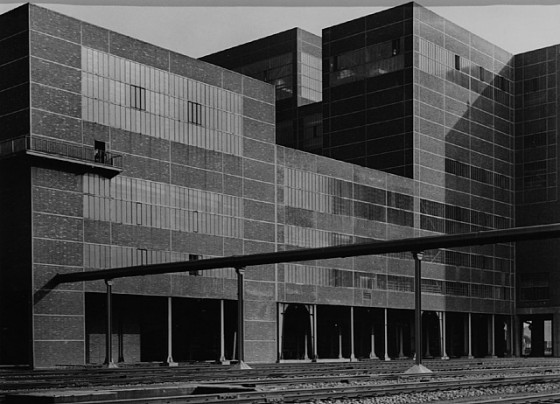
Albert Renger-Patzsch, Germany 1954
If we accept the broad strokes idea of Renaissance man beginning to see him or herself as belonging to a civic unit, a religious unit, and then a guild and family, then that extrapolated with the birth of visual culture in a sense (per Burgin), following on the human body as a source of measurement (seven hands high or whatever) and ending in the scotomization of the body and the ceding of conceptual authority to the eye. However much one accepts this, the salient point is that visual representation began to take on characteristics of this disembodied and mathmatics based theorizing –instrumental thought. Navigational charts, city maps, etc…it all worked toward the instrumental logic of capital.
Burgin:
“The optical geometric device was synonymous with the advancing ideology of colonialist capitalism and governed western European representations for centuries”.
How capitalism colonized spacial perception is a topic of never ending complexity, I suspect. But there is always an attendant narrative that runs alongside these changes, as both cause and effect.
A look at the work of Herbert Bayer for example, while working for the Container Corporation of America, is an interesting lesson in how the Bernays century worked. Instrumental thought and “rational” planning was there to advance sales and profit. It was never rational planning for quality of life. Notwithstanding the genius of Bayer’s designs and images.
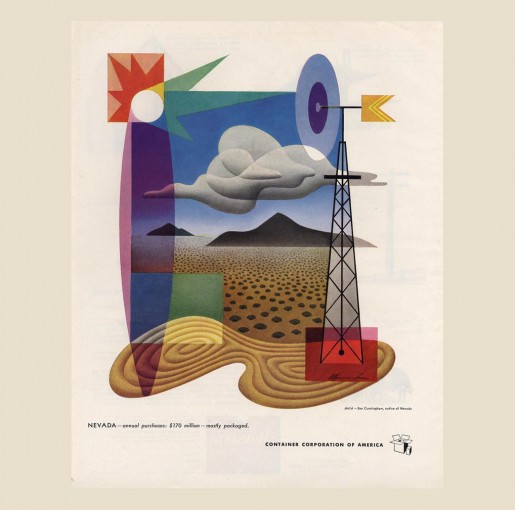
Branding was soon to become the overriding reality– and Baudrillard sensed many of the truths of this. The image culture becomes a sampling image culture and the control of this an index to capitalist reproduction and profit.
So — the lived space today has altered through the narrative attached to it, or written in opposition to it. The logos and hyperbranding and endless circulation at nano second acceleration is both a truth and a lie. Those segregated migrant workers who are kitchen staff in trendy restaurants, or other service sector jobs in the virtual gated communities of every US city, are not living with the same image tensions, or perhaps they are, but they are on the flip side of it, — but increasingly the post modern theory that seems to privilege choice, individuality in style codes, as if there was anything to actually choose, feel deeply reactionary.
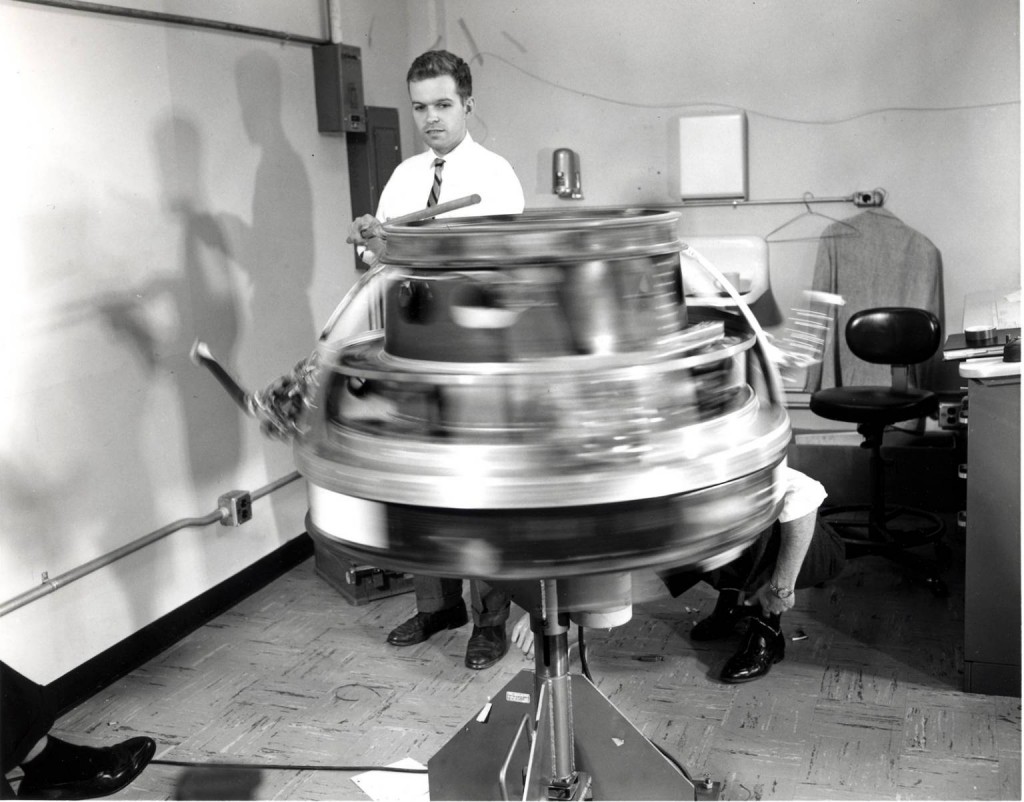
Sultan & Mandel
This simply leads to the sense for artists that it is not enough to traffic snark, or smug self congratulation. It is not enough to see but project outward the savage truths of the blasted wasted physical space of western urbanism, but no less the realities of rural atrophy as well. The sense I have is of a populace ever more polarized, but unified by a zero point, a psychic implosion — where the vast armada of image, of brand, has resulted in an almost associative agnosia; the world is seen, recognized … but the meaning of anything is utterly forgotten. People can point to a photo of a pig, but cant tell you what a pig is, and don’t know bacon comes from the dead pig.
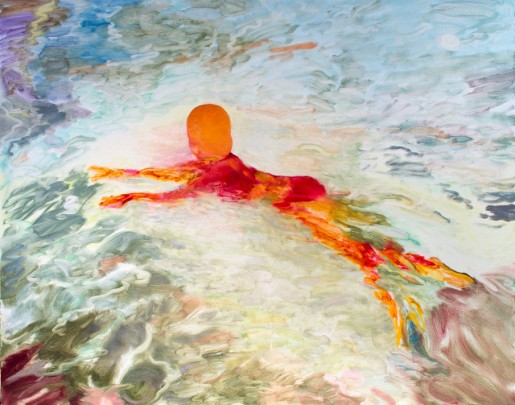
Architecture now reflects– intentionally or not — most directly the sense of the invisible, the unheard, the lumpen workers of western advanced capital, and who are rarely reflected in either the functional cliches of most architects, nor in the smug attitude of the snarkmeisters. The New Topographics marked a decisive merging of various cultural and political threads. Those photographers came together, most not knowing each other, to define something of the growing anxiety in the US population, and they provided a visual narrative that translated into prose and even theatre….(though not much theatre, but we could site Padua Hills a bit later, and some of the off off broadway work) and in film (Who’ll Stop the Rain, based on a novel by Robert Stone, who also wrote the screenplay, and directed by Karol Reisz, 1978, and Cutter’s Way, 1981, perhaps, and Nightmoves 1975….these were the post Viet Nam noirs and they articulated the anxiety, and regret of the people, and a renewed longing in them for escape and migration, and the recognition that there was no romantic dream, no sincere idealized love to be had under police state germination).
But that exhibition in Rochester, NY, was in a sense the rebirth of allegory in the cultural West.
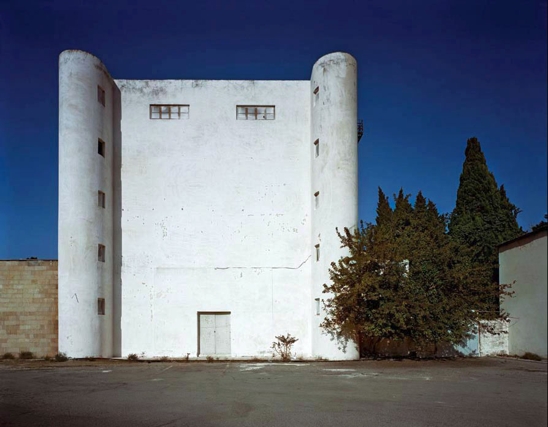
Palace of Culture, Baku, designed by Vesnin Bros. built 1929
There are new photographers, many students of Baltz, the Bechers, and Wessel, Schott, Deal, and Shore. The work of Andreas Gursky, and Thomas Struth, but also Paul Graham, Stephane Courturier, Sione Nieweg and Sze Tsung Leong — are following something, in varying ways, of this almost tragic sensibility. Today the work of many of these students feels, at times, infused with a manufactured optimism however, the subtle inroads of gratuitous sheen and light… or simply something synthetic. Perhaps they serve though, in a good sense, as postscripts to the core New Topographer group and Sultan and Mandel, who had put the official ideology of WASP america on an autopsy table. As Adorno said of Beckett, ‘He put meaning on trial’. A trial without end, without resolution. This is work that serves, still, as the aperture for the ‘missed encounter’ (Lacan) and the sense of instability that had been building since the Renaissance, through Haussmann’s re-configuring of Paris, to the Bauhaus and Vesnin Brothers — to Las Vegas, and to the U.S. Prison gulag. Route 66 ends at LA county Jail if it ends anywhere. The bourgeoisie crap seen at Lincoln Center, or on Broadway, or 99% of the films produced in the US, and almost 99.9% of graduate writing program prose is just reactionary dog food, useless and produced and disposed almost simultaneously. Publish, remainder it, line your parakeet cage with it.
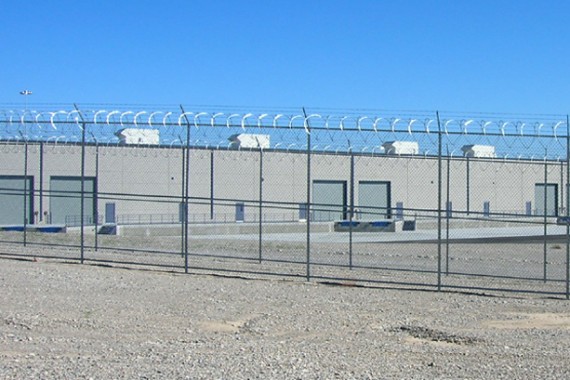
Nevada State Prison
It is good to look again at the work from this exhibit, and of the later work by these photographers. There is nothing being sold. There is no agenda, no class obscruantist trickery…..it is just the sense of “space” registered, and that is the real source of artistic creation. It is haunting disturbing truthful work.
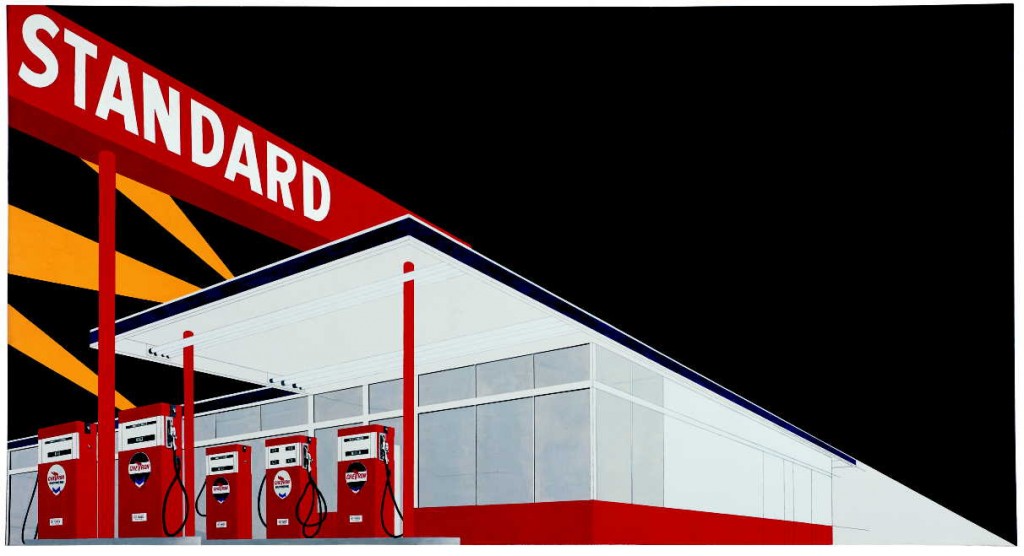
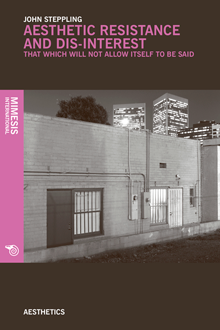
Speak Your Mind